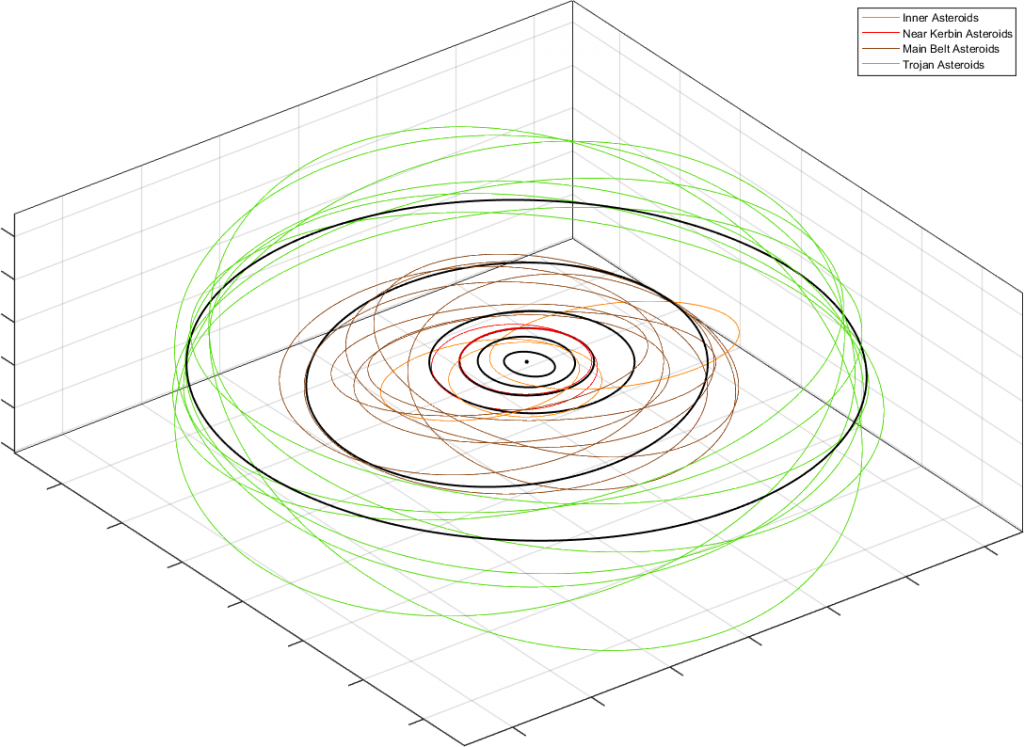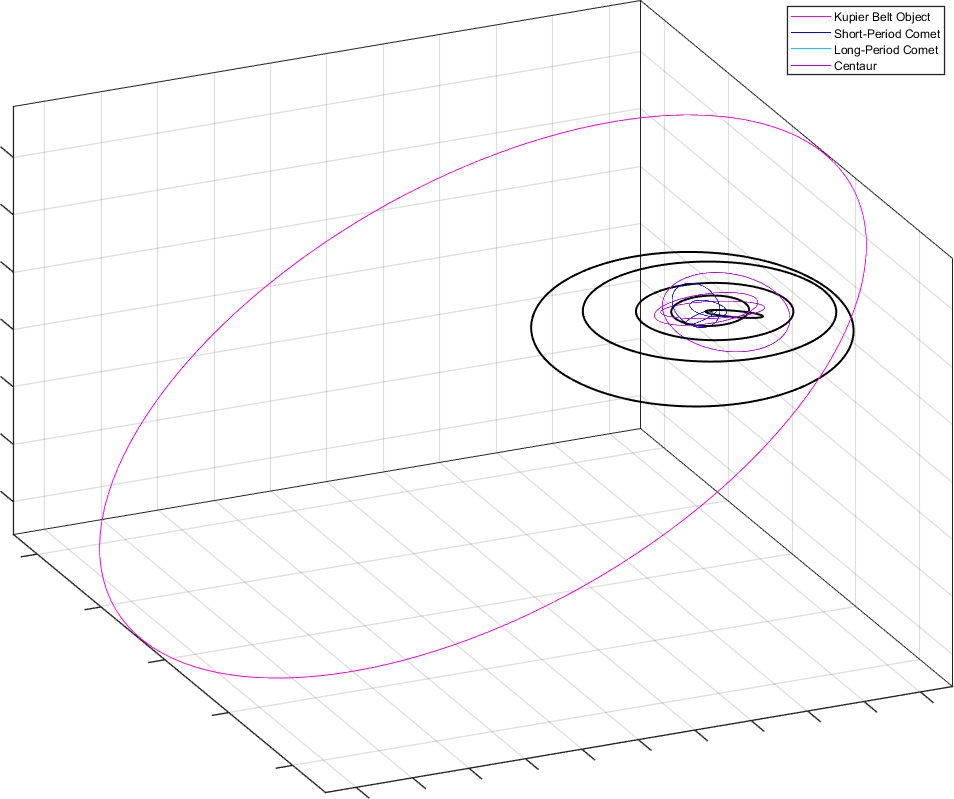|
Rocketry Programs Update
The report analyzing the Kerbin I mission has finally been released, meaning all previous missions are now in the rear view and while the Progenitor team has already been working hard on upcoming mission plans now too can the Ascension team. The Progenitor team have been going over the 4 Progeny Mk7-B missions that were originally planned, which will allow for testing of booster recovery and re-use as well as really putting the gimbaling vacuum engine through its paces so a new and larger vectoring engine can make its way to the Ascension Mk3 upper stage. The Ascension team will now begin to review plans for Specialist Bob’s Mk1 mission, the unkerbed mk1 mission to further explore the radiation belts (with Goo), and the next Mk2 mission that will place into orbit Kerbin II to determine how to deploy and operate future communications satellites.
There has also been a recent setback to our hopes of re-using spent solid rocket boosters when the first attempt to fire a used booster, the first Boostertron II that was fired back in February, ended halfway through with an explosion. While the test stand was damaged, it was also built to expect failures and this was hardly the biggest engine size it was designed for. Repairs will take at least the next 2 weeks and by then hopefully the folks at Periapsis Co. who manufacture new boosters and recast the spent ones will have an idea of what went wrong.
Currently the Progenitor team is hoping to announce new launch dates early next month while the Ascension team is hoping to announce new launch dates closer to the end of next month. By June we should be well back to launching missions!
Vant Joins Ranks of Minor Planets
Despite all we already know about large bodies in the Kerbolar system, space is big, even in our own backyard. Astronomy wasn’t a huge field before the asteroid impact and only recently has it begun to really take off with enthusiasm after being able to return to the surface and also discovering that we are not alone in the universe. There is a lot of sky to cover and a lot to search for, so it’s no real surprise it took over 2 years to discover a new minor planet out in the Main Belt asteroid region, where Dres also resides. The team of astronomers behind the discovery broke the news to the Kerbal Astronomical Society late last year and in the time since others have joined in to help constrain the object’s orbit so that the KAS could officially announce it, which it did earlier today. You can learn more about the new body on our Ops Tracker by zooming in on the system map and clicking on its position. Just barely visible to the naked eye under extremely dark Munless skies, the light spectra shows icy compounds which means it is likely small and bright. Much more study will take place over the coming months and years.
In related news, the potential major comet Sorlon also recently received an update to its physical data with a new estimate of its mass, size and rotational period. Light curves suggest it may be a rather oblong object which calls its size into question – are we seeing it rotate long-wise or is a pointy end facing us and making it appear smaller? As it nears perikelion over the next 2 years the KAS should be able to get better information.
ATN Database
The latest update for the Asteroid Tracking Network database is available here, containing 5,027 asteroids and 2 updated with new observation data. Here are the 33 asteroids that were discovered this past week.
 |
 |
From the Desk of Drew Kerman
Out of Character Behind the Scenes stuffWritten on 4/18/20
Still healthy but still slogging, really having trouble pushing ahead. I think back to times I took breaks and ended up with 3-months lead time and it felt so easy. I guess it was, relative to the kinds of missions I now have to plan and execute in addition to post-analysis and planning for future events. And that’s not just the obvious stuff based on mission goals and technology but also factoring in the various stories I’m trying to weave into all this. It reminds me of how I was never able to write a novel. I loved penning short stories and poems and I did do numerous novel outlines throughout my life but never actually finished one – not even for NaNoWriMo, which I attempted twice. Is KSA approaching the limits of my long-form storytelling abilities? Does that really even matter? It’s still a challenge to build and execute missions just for the basic goals of doing things like putting a kerbal into orbit or visiting Mun or going interplanetary. I just feel like it will be a bit of an empty shell in publishing all that without some kind of over-arching story behind it all.
Anyways, that’s just an ever-present and ongoing struggle I will have to continue to wrangle with. Meantime, I have notes…
Comment spam
Last week the website started receiving spam comments at the rate of 1 every second or so. Continuously. By the end of the week I had nearly 500,000 and it wasn’t letting up. In the past I’ve deleted maybe half a dozen to two dozen spam comments every 2-3 days and it wasn’t really an issue. I was hoping the deluge would just stop but after that week I decided I needed to intervene and searched up a plugin that let me mass-delete all the unapproved comments in one go. Thankfully that worked cause if I had to do it manually I could only delete batches of about 15 at a time because of how WordPress sends the information on what comments to delete – it passes it all in a URL string that gets too long for the server to process.
I don’t want to shut the comments down entirely because even though I’ve only gotten a handful of them over the years I’ve been grateful for each one, which has either been a nice message of support and/or something I hadn’t considered that I should be doing. I want to make sure people can give feedback easily, unfortunately this ease of access is what bad actors love to work with.
Not sure either what caused this deluge of spamming when my traffic reports since it started have not been anything to write home about. Apparently I got someone’s attention somehow, and not in a good way. So it goes.
But in the event the instigator of it all happens to read this – please drop dead 😁
(Update 4/24: I shut the comments down, but will switch them back on in a week or so and see if the spam is still streaming in)
Deuce upgrade
One of the things that happened in the upgrade to KSP v1.8.1 is new AJE Extended configs for the KAX propellers. While I did in fact fly the last mission with the older configs that I ported over for use in 1.8.1 I think that may have been part of the problem involving the staging of the engines at launch. Regardless, I want to be working with the latest and greatest so the Deuce is getting an engine overhaul. It also really has over 50 hours of flight time. Which realistically isn’t a whole lot but relative to my ability to carry out missions among everything else that needs to be done for the KSA that’s a significant amount IMO.
Elongation photos
I read Astronomy and Sky & Telescope magazines and I’ve always found it cool how they trace the motion of planets in sky charts. It’s also not something that people really think about when they look up at the sky – they know the planets are moving but not many ever really considers how the motion looks. The outer planets, for instance, can at times move retrograde – they don’t just track in one direction across the sky as they move. I’ve never seen anyone do these visualizations for KSP bodies before, (closest I’ve seen is videos people made of Minmus or Ike analemma) so finally got around to doing the two inner planets.
The Moho one was the toughest since I wanted to show clouds as it was out over the water and there were no high mountains blocking the horizon (which was also a consideration for pointing east since Moho doesn’t climb very high). I used Camera Tools to aim, EVE/Scatterer for the atmospherics, Ambient Light Adjustment to darken terrain, Distant Object Enhancement to show Moho’s position and Hyperedit to move the game clock forward an exact number of seconds to keep the time of day constant while the planet motion adjusted.
Vant
There’s a new planet pack in town, and if you want to be spoiled by seeing all the new worlds I plan to eventually discover then head over to the forum thread. I chose Vant to be discovered now because of the lull in other things happening this is as good a time as any to have something new to talk about. It also really is visible via DOE so that fact alone made me decide it should be the first one to be found.
Okay the goal for next Desk Notes is to not take another two weeks to get to the next Desk Notes.







